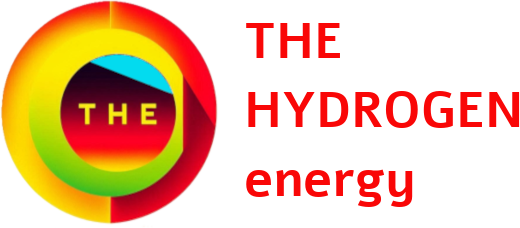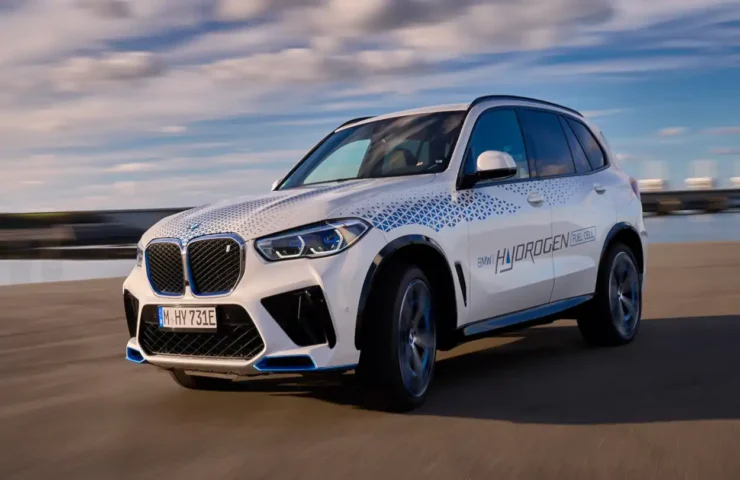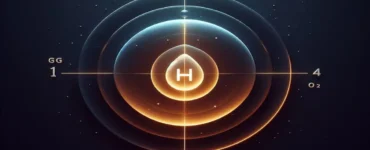BMW Hydrogen Car: BMW iX5 Hydrogen model is an advanced hydrogen Fuel cell powered vehicle that BMW has been testing and refining as part of its broader hydrogen strategy. It combines hydrogen fuel cells with electric powertrain technology, offering a unique alternative to battery electric vehicles. Below are the key technical details of its powertrain, hydrogen storage, fuel cell specifications, and electric motor.
BMW Hydrogen car is a Concept Car:
BMW iX5 Hydrogen is a concept vehicle that is not yet available for purchase and has no set price. This pilot fleet of test and media vehicles are key in the process of making the BMW iX5 Hydrogen concept vehicle available to customers in the future; however, it is dependent upon a number of market requirements.
Powertrain Overview:
The BMW iX5 Hydrogen car utilizes a hydrogen fuel cell-electric powertrain. The vehicle operates similarly to a battery-electric vehicle, except instead of a large battery, it uses a fuel cell to generate electricity onboard from hydrogen.
- Fuel Cell + Electric Motor: The hydrogen fuel cell generates electricity to power the electric motor, which then drives the vehicle.
- Type: Hydrogen fuel cell system combined with an electric motor.
- Total System Output: Approximately 295 kW (401 hp).
- Electric Motor: Fifth-generation BMW eDrive synchronous motor, A single AC synchronous electric motor drives the rear wheels. Electrically excited synchronous motor (EESM)
- Transmission: Single-speed automatic transmission.
Hydrogen Usage
- Compressed gaseous hydrogen (GH2)
- Fuel Cell System Output: The fuel cell generates 125 kW (170 hp) of power. The buffer Li-ion battery supplements the power gap from the fuel cell with a maximum 170 kW (231 hp) in bursts to reach out 295 kW total
- Hydrogen Consumption or mileage: The vehicle consumes approximately 1.19 kg of hydrogen per 100 km (WLTP cycle). Just note that One kg of 700-bar hydrogen contains almost the same energy of one gallon of gasoline (3.78 Litres)
- Emissions: The only byproducts from the fuel cell are water vapor and heat, resulting in zero CO2 emissions or zero NOx emissions.
Hydrogen Storage
- Tanks: The iX5 Hydrogen is equipped with two hydrogen tanks made from carbon-fiber-reinforced plastic (CFRP).
- Pressure: The tanks operate at 700 bar pressure.
- Hydrogen Capacity: Together, the tanks can hold about 6 kg of hydrogen.
- Refueling Time: The hydrogen tanks can be fully refueled in approximately 3 to 4 minutes.
Fuel Cell Specifications
- Fuel Cell Type: Toyota’s second generation 125 kW fuel cell stack is designed in collaboration with Toyota, utilizing technology from the Toyota Mirai.
- Efficiency: The fuel cell system is designed for high efficiency, allowing for effective conversion of hydrogen into electricity.
- Operating Conditions: The fuel cell system has been tested under extreme conditions, including high temperatures and varying humidity levels.
Performance Specifications
- Acceleration: The iX5 Hydrogen can accelerate from 0 to 62 mph (0 to 100 km/h) in less than 6 seconds.
- Top Speed: The vehicle has a top speed of approximately 115 mph (185 km/h).
- Range: The iX5 Hydrogen has a range of about 504 km (313 miles) on the WLTP cycle.
Fuel Cell Operation & Efficiency:
- Cold Weather Performance: One of the major advantages of hydrogen fuel cells is their resilience in colder climates. The iX5 Hydrogen’s fuel cell system is engineered to operate at -20°C and above, ensuring robust performance in a wide range of conditions.
- Cooling System: A sophisticated multi-stage cooling system ensures that the fuel cell remains within its optimal operating temperature range, especially during high loads like highway driving or aggressive acceleration.
Vehicle Safety Systems:
Hydrogen Safety: The hydrogen storage system is designed with multiple safety measures:
- Crash Safety: The CFRP tanks can withstand high impacts, making them safer in crash scenarios.
- Hydrogen Sensors: The vehicle is equipped with sensors that can detect hydrogen leaks and automatically shut off the system in case of an emergency.
- Release Mechanism: In case of a crash or over pressure, the tanks have a controlled release valve that safely dissipates hydrogen into the atmosphere.
BMW Hydrogen Car Specifications:
| Component | Specifications |
|---|---|
| Total Power Output | 275 kW (374 hp) |
| Fuel Cell Power | 125 kW (170 hp) |
| Hydrogen Storage | 6 kg, 700 bar, two CFRP tanks |
| Range | 500 km (310 miles) (WLTP cycle) |
| Acceleration (0-100) | < 7 seconds |
| Refueling Time | 3-4 minutes |
| Emissions | Zero (only water vapor) |
| Battery | Li Ion based , buffer battery < 2 kW |
| Top Speed | ~200 km/h (124 mph) |
| Drive Type | Rear-wheel drive with BMW’s electric motor |
| Vehicle Weight | ~2,500 kg |
| Hydrogen Efficiency | 60-65% (depending on conditions) |
BMW Hydrogen Car Summary:
The BMW iX5 Hydrogen represents a significant step in the development of hydrogen fuel cell technology for passenger vehicles. With its innovative powertrain, efficient hydrogen storage, and impressive performance specifications, it showcases the potential for hydrogen as a viable alternative to traditional battery-electric vehicles. While currently in low-volume production and testing, the iX5 Hydrogen aims to contribute to BMW’s broader strategy for sustainable mobility and reduced CO2 emissions.
Source: BMW website
This article is Copyright protected







Really excited about this technology and a better solution for BEVs Thank you
Larry, Thank you!